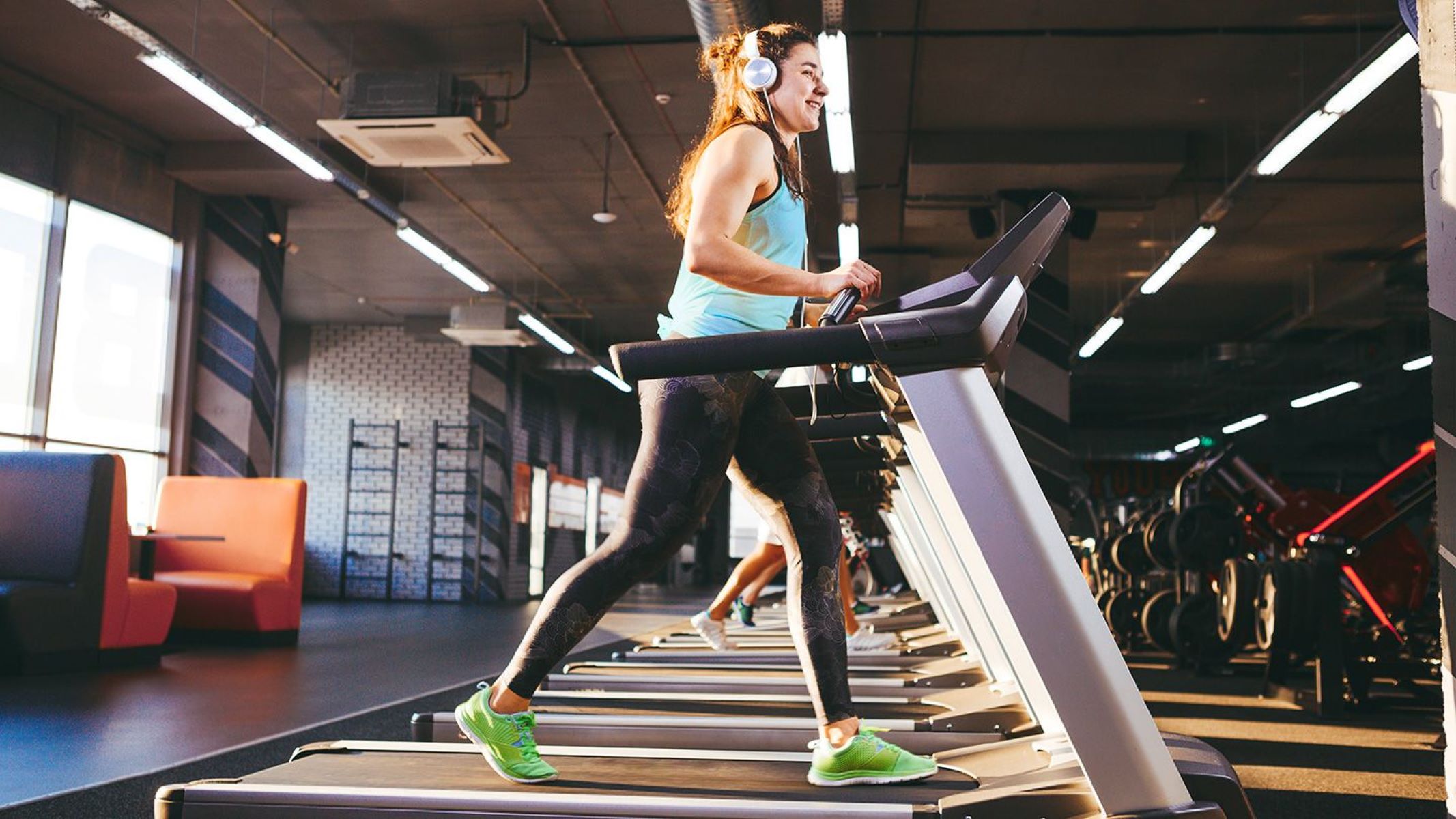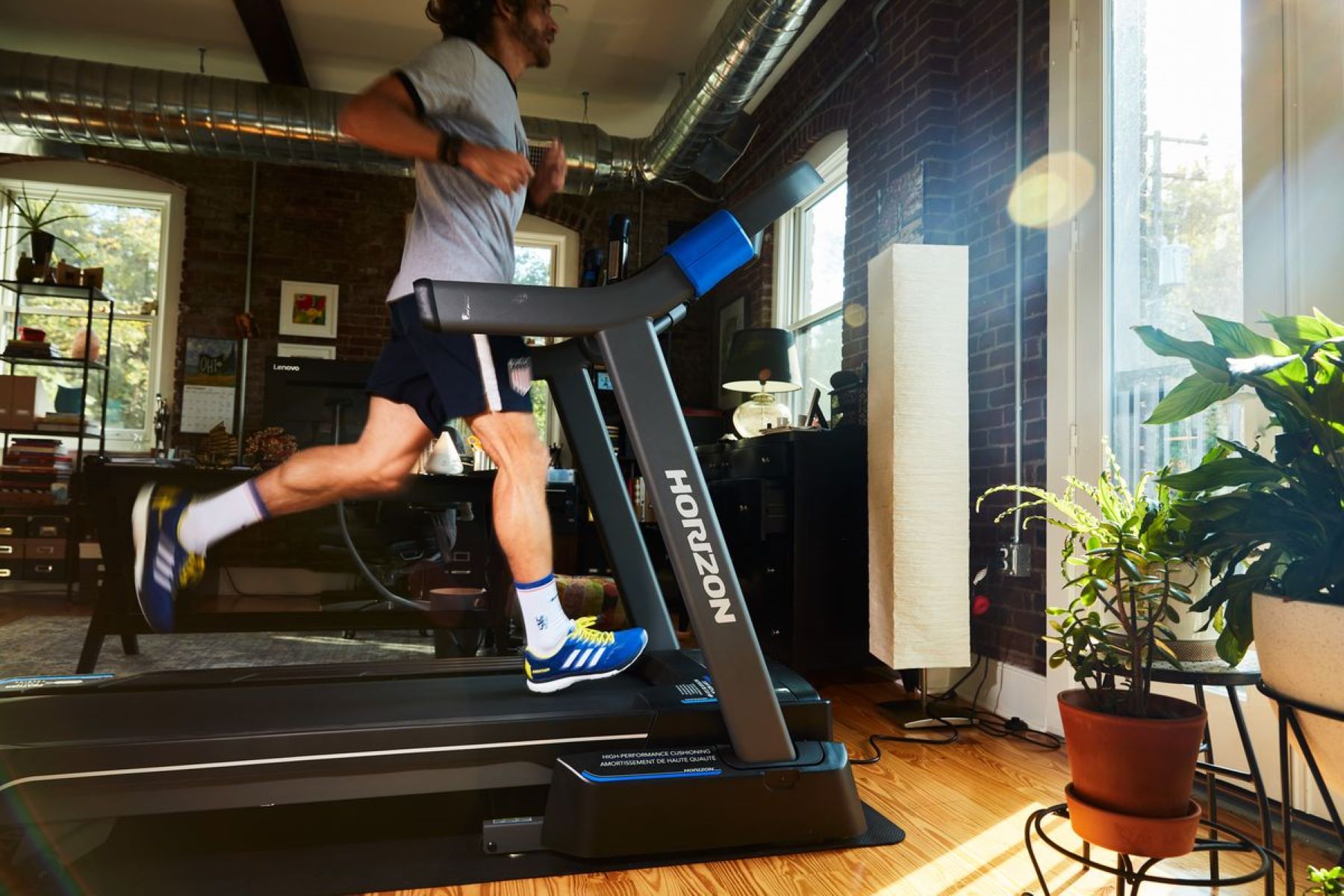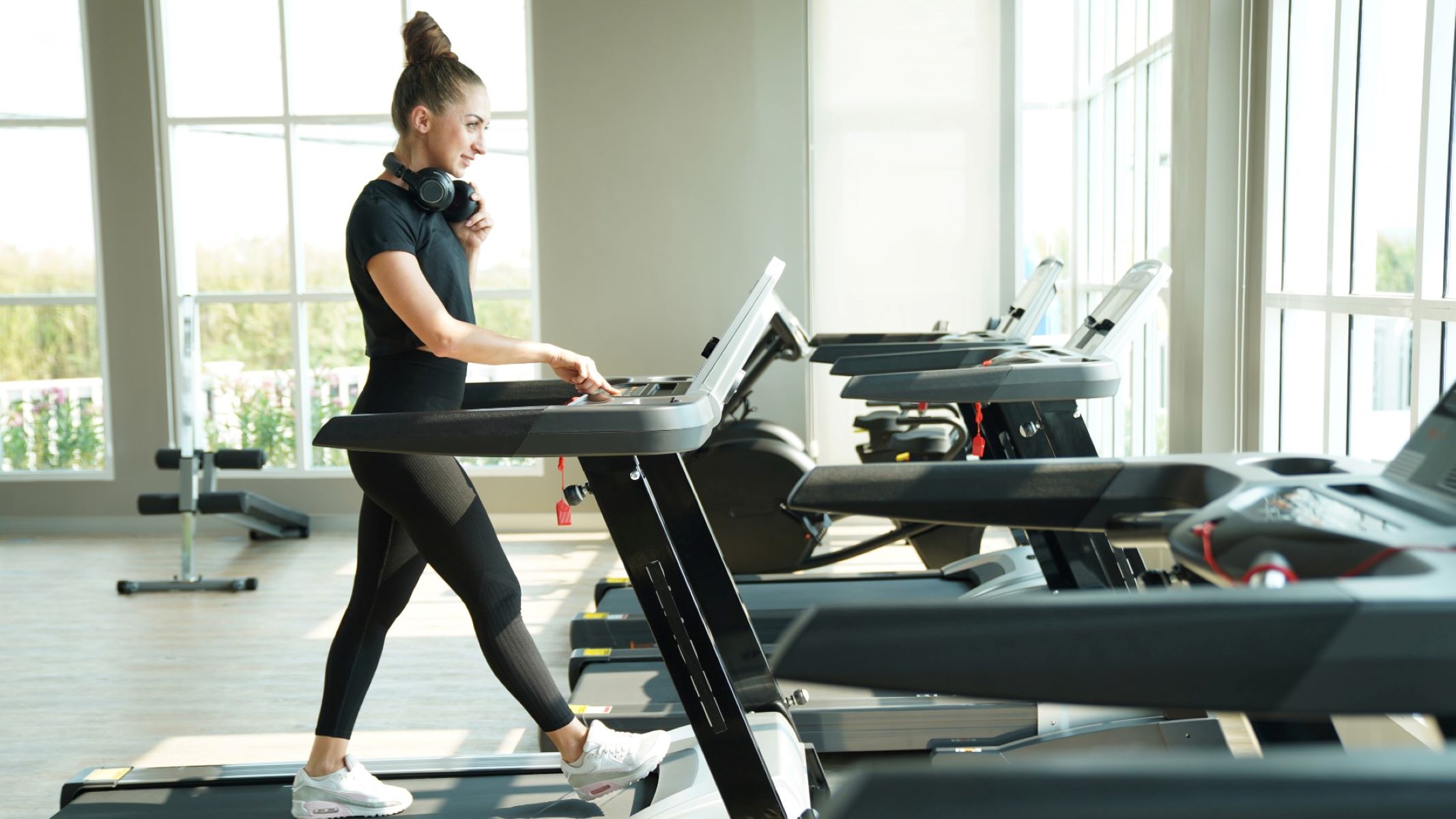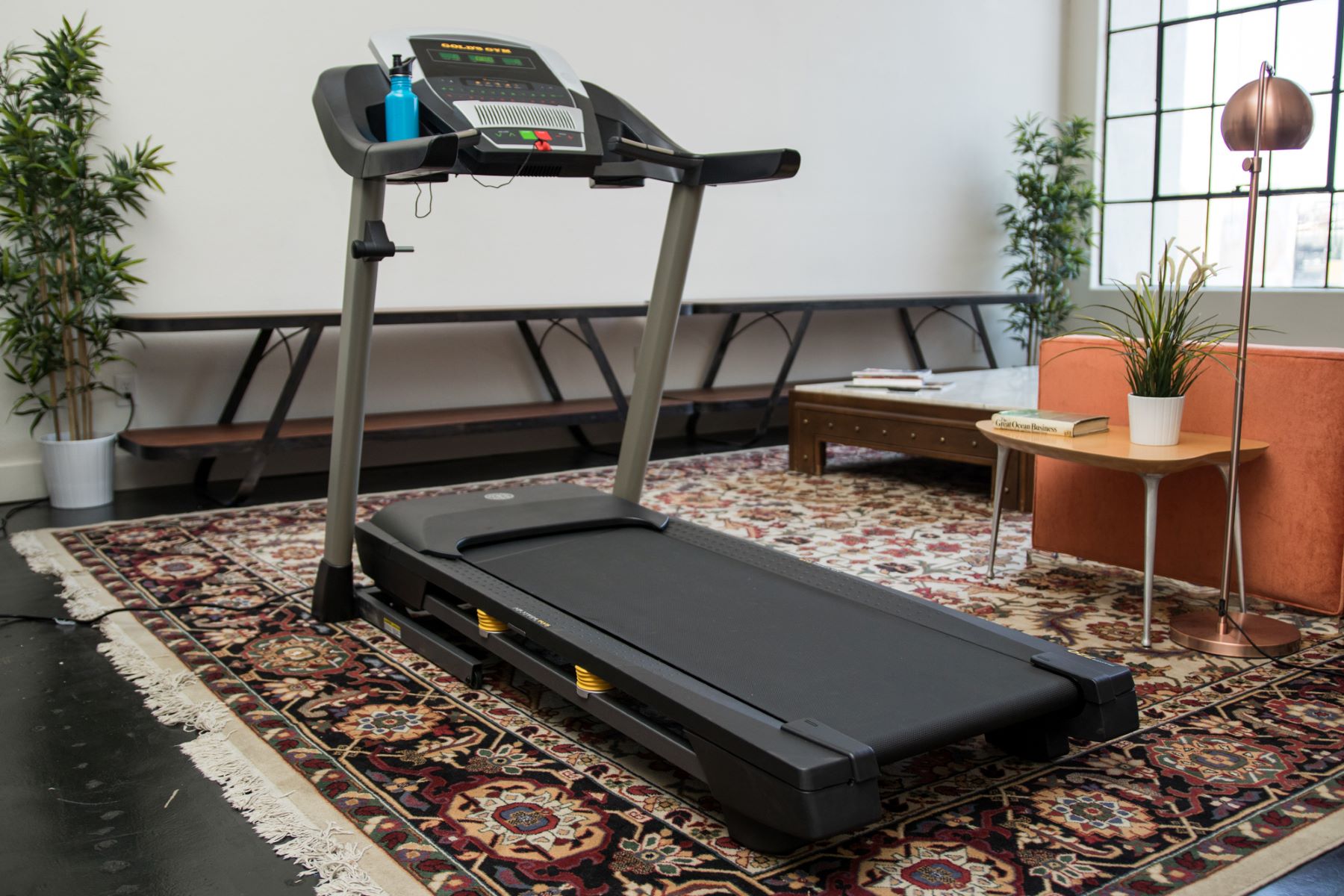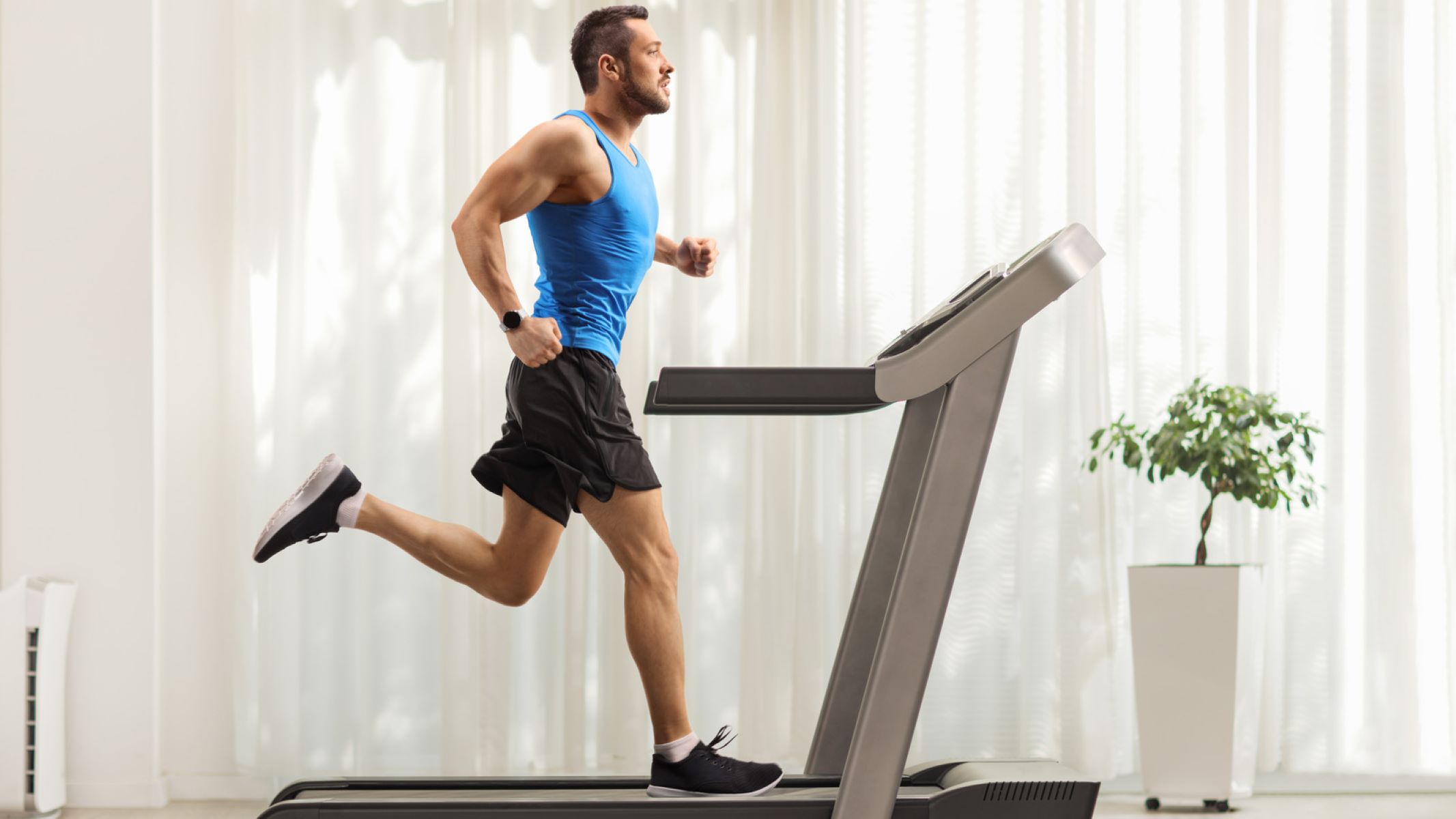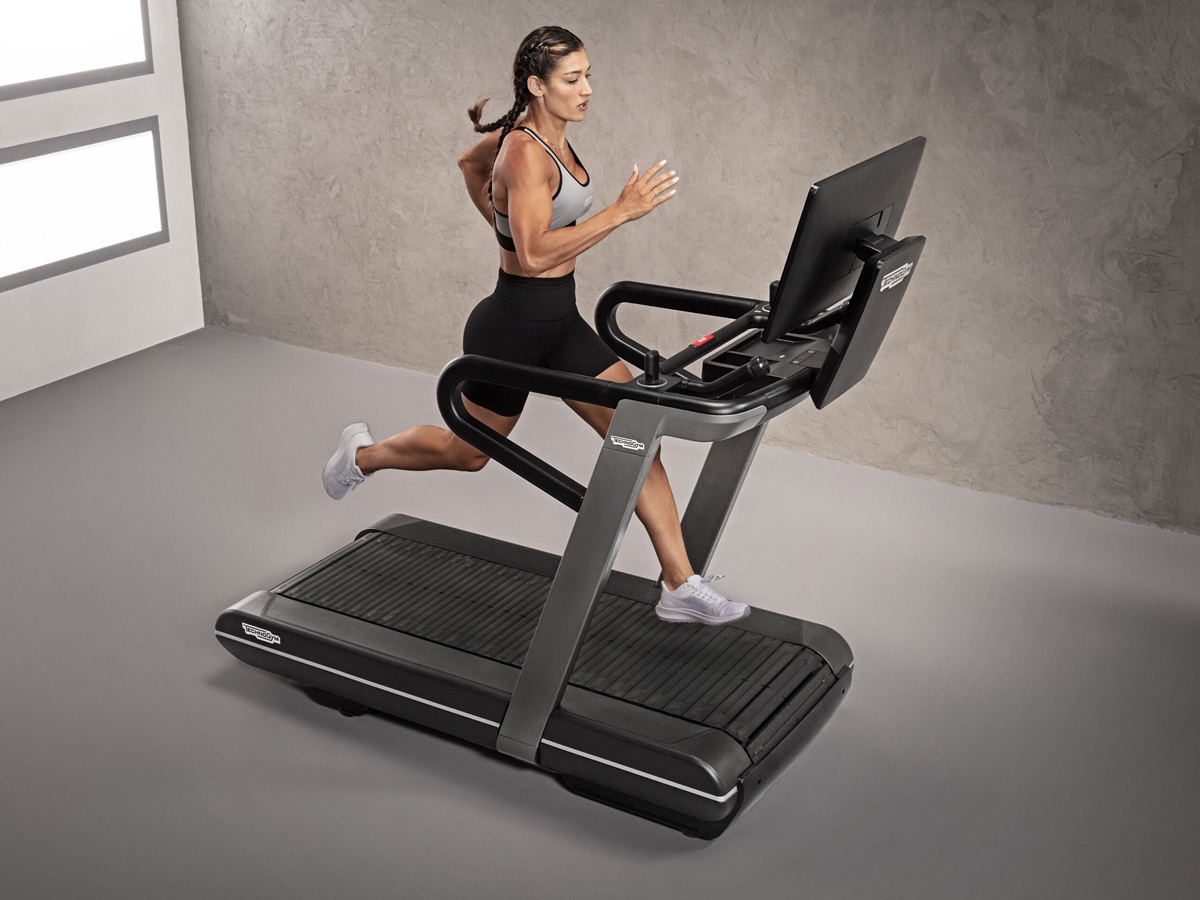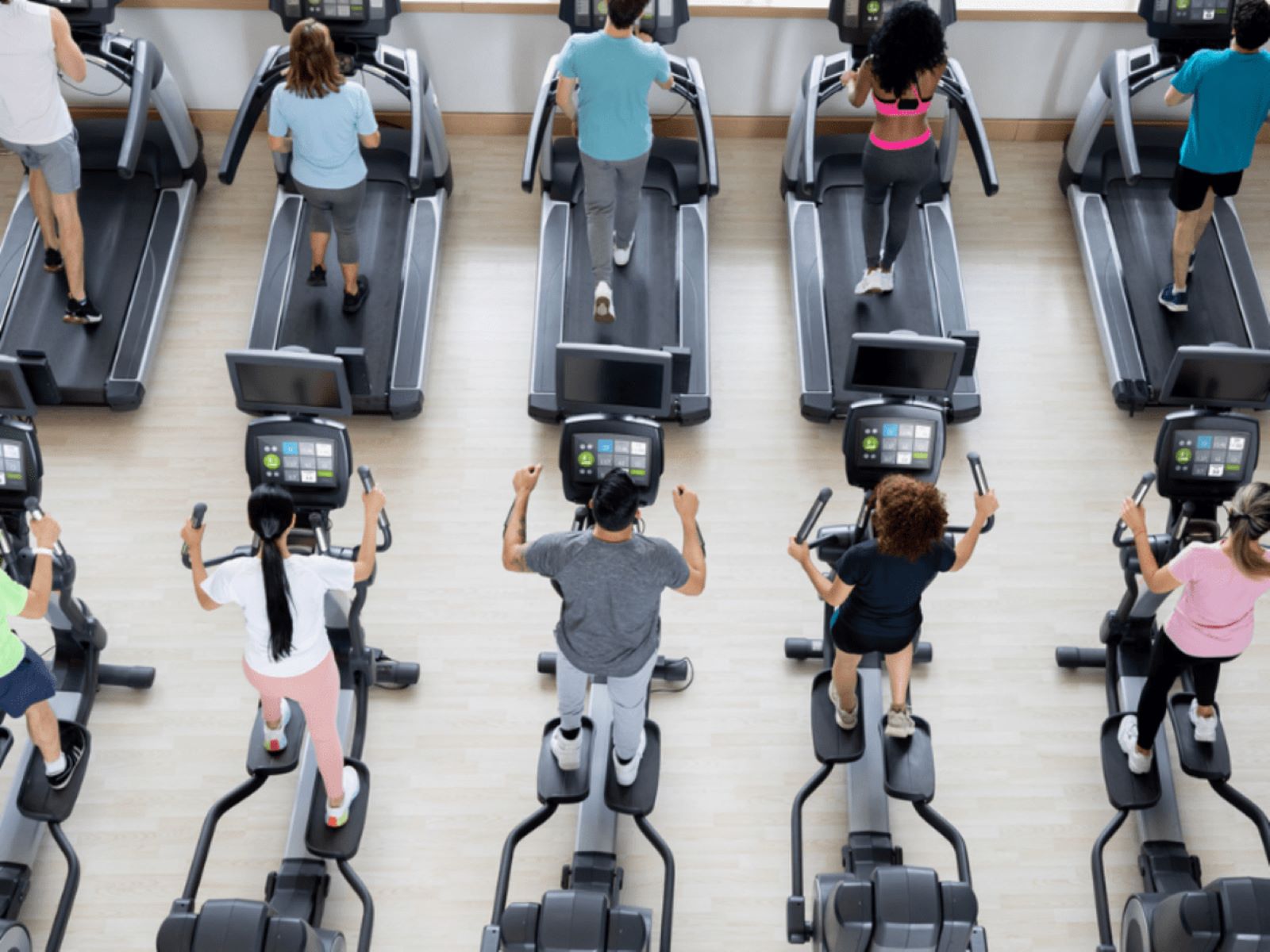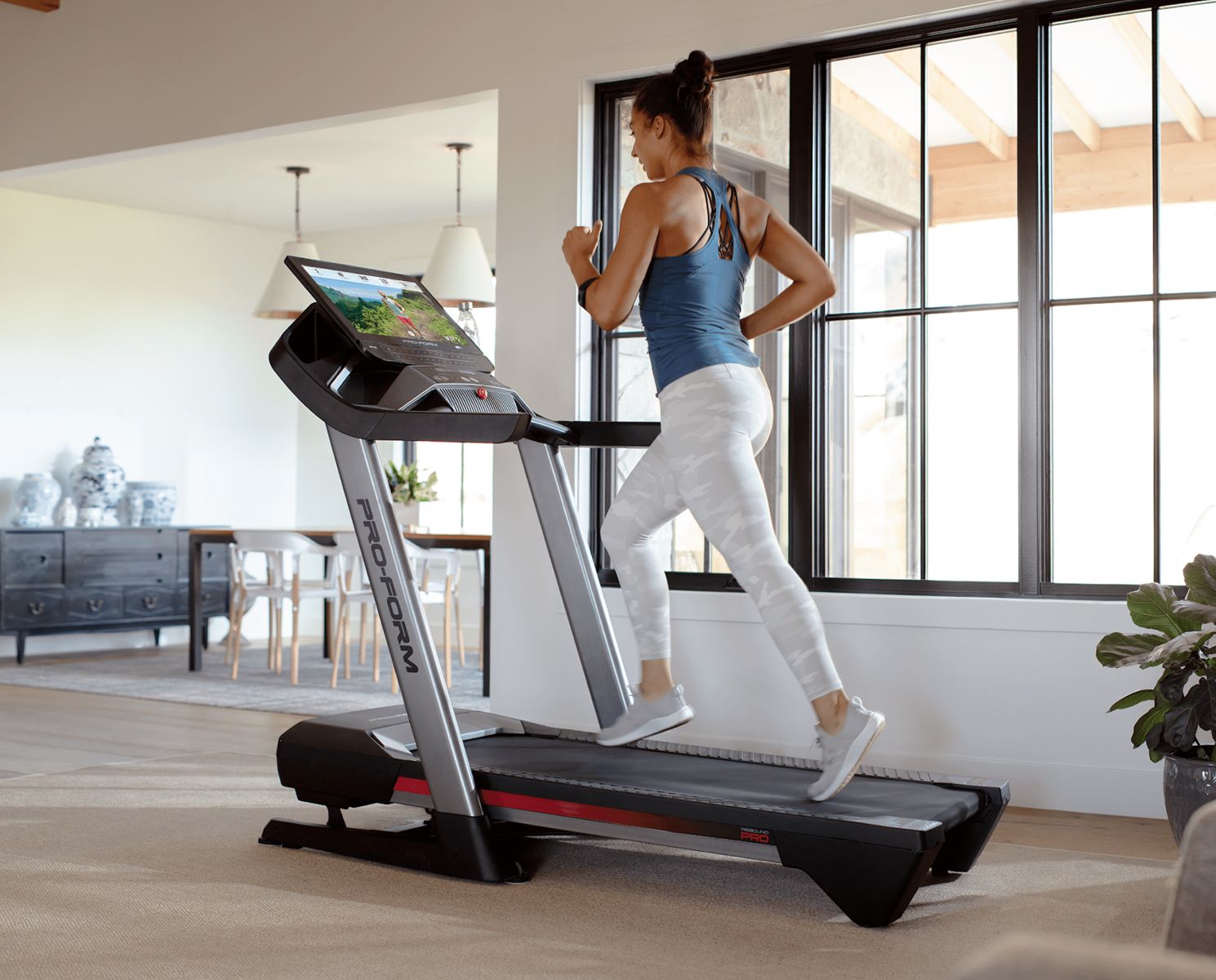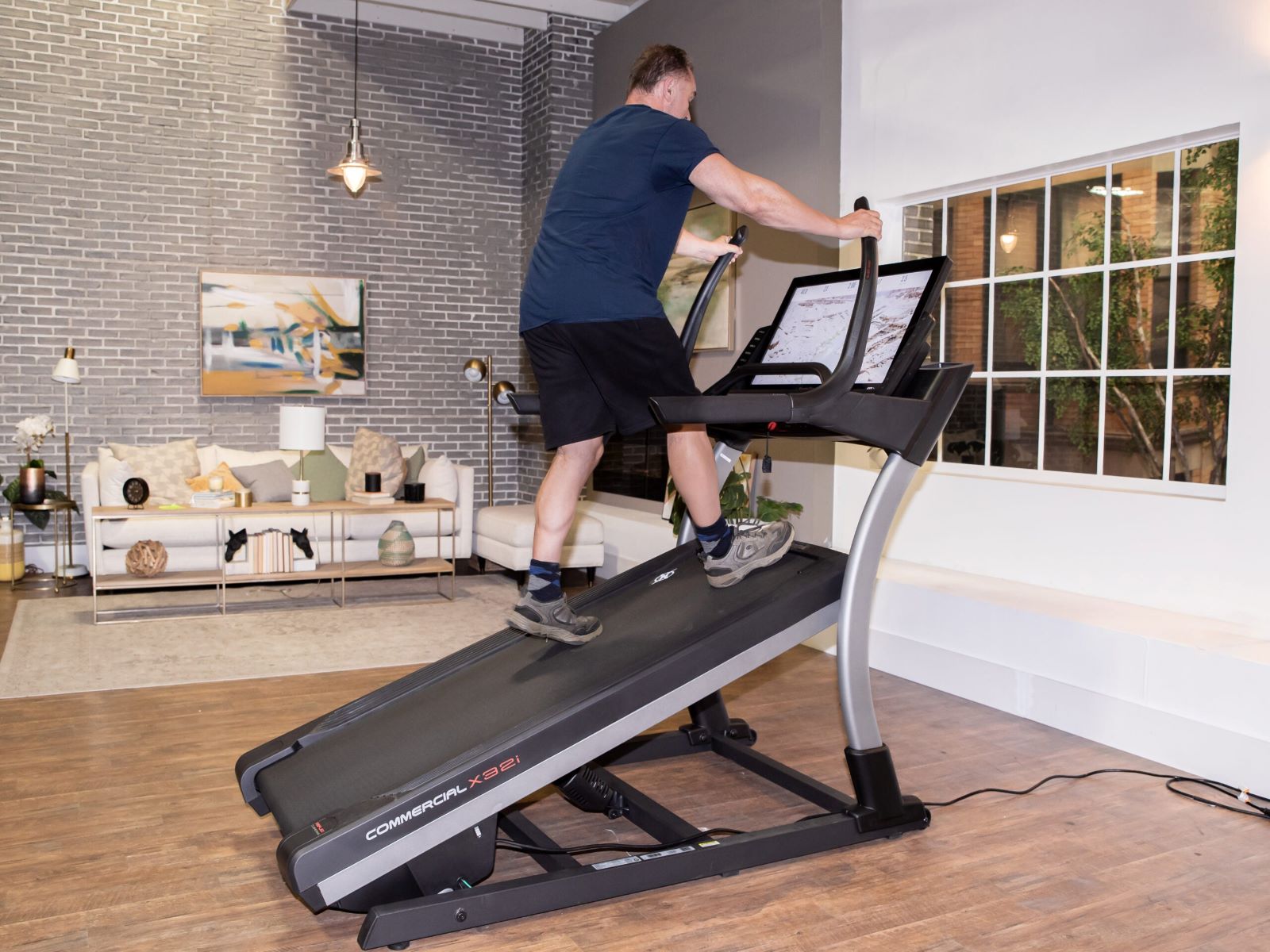Home>Misc>Featured>How Many Calories Can I Burn For A Treadmill Workout


Featured
How Many Calories Can I Burn For A Treadmill Workout
Modified: January 2, 2024
Use our featured treadmill calculator to quickly and accurately calculate how many calories you can burn during your workout session. Get fit and stay motivated!
Introduction
Are you looking to shed those extra pounds and achieve your fitness goals? One effective way to do so is by incorporating the treadmill into your fitness routine. The treadmill is a popular cardio machine that can help you burn calories, improve endurance, and boost overall fitness.
When it comes to weight loss, one crucial aspect to consider is the number of calories burned during your workouts. By understanding how many calories you are burning on a treadmill, you can better plan your exercise regimen and optimize your weight loss efforts.
But how do you accurately calculate the number of calories burned on a treadmill? And why is it important to have this information? In this article, we will explore the factors that affect calorie burn, the importance of accurate calculations, and how to use a treadmill calculator to track your progress. Whether you are a beginner or a seasoned fitness enthusiast, this information will help you make the most out of your treadmill workouts.
So hop on to your treadmill and let’s dive into the fascinating world of calories burned on a treadmill!
Understanding Calories and Weight Loss
Before we delve into the specifics of calories burned on a treadmill, let’s briefly discuss calories and their role in weight loss. Simply put, a calorie is a unit of energy that our bodies require to function. When we consume food or engage in physical activity, we burn calories.
Weight loss occurs when we create a calorie deficit, meaning we consume fewer calories than we burn. In other words, we need to burn more calories than we consume to shed those extra pounds. This is where exercise, such as treadmill workouts, comes into play.
Engaging in regular aerobic exercise, like treadmill running or walking, can significantly contribute to weight loss. These activities not only help burn calories during the workout but also increase your resting metabolic rate, allowing you to burn more calories even at rest.
A pound of body weight is approximately equal to 3,500 calories. So, to lose one pound per week, you would need to create a calorie deficit of 500 calories per day. By incorporating treadmill workouts and managing your calorie intake, you will be well on your way to achieving successful and sustainable weight loss.
It’s important to note that weight loss is not solely determined by the number of calories burned. Factors such as genetics, metabolism, and overall dietary habits also play a significant role. However, by understanding calories and their relationship to weight loss, you can make informed decisions about your fitness journey.
Now that we have a basic understanding of calories and weight loss, let’s explore the factors that can affect the number of calories burned on a treadmill.
Factors Affecting Calories Burned on a Treadmill
When it comes to calculating the number of calories burned on a treadmill, several factors come into play. Understanding these factors can help you better gauge your calorie burn and make adjustments to your workouts as needed.
1. Body Weight: One of the primary factors influencing calorie burn on a treadmill is your body weight. The more you weigh, the more calories you will burn during a workout. This is because it takes more energy to move a heavier body.
2. Intensity: The intensity of your treadmill workout has a direct impact on calorie burn. Running or walking at a faster pace or with increased incline will require more energy, resulting in a higher calorie burn. Incorporating intervals, such as alternating between high-intensity sprints and recovery periods, can further boost calorie expenditure.
3. Duration: The length of your treadmill workout also plays a role in calories burned. Generally, the longer you exercise, the more calories you will burn. However, it’s important to strike a balance and not overexert yourself, especially if you are a beginner. Gradually increasing the duration of your workouts over time is a more sustainable approach.
4. Fitness Level: Your current fitness level can impact calorie burn on a treadmill. If you are just starting, your body may not be accustomed to high-intensity workouts, resulting in a lower calorie burn. As you become fitter, your body becomes more efficient at burning calories, and you may need to increase the intensity or duration of your workouts to continue challenging yourself.
5. Age and Gender: Age and gender can also influence calorie burn. Generally, younger individuals tend to have a higher metabolic rate and may burn more calories during exercise. Men typically have more muscle mass than women, which can result in a higher calorie burn as muscles require more energy.
It’s important to note that these factors are not set in stone and may vary from person to person. Everyone’s body is unique, and individual differences should be taken into account when tracking calories burned on a treadmill.
Now that we understand the various factors affecting calorie burn, let’s delve into the importance of accurate calculations.
The Importance of Accurate Calculations
Accurate calculations of calories burned on a treadmill are crucial for several reasons. Firstly, having an accurate estimate of calorie burn allows you to set realistic fitness goals and track your progress effectively. It provides you with a tangible metric to gauge the effectiveness of your workouts.
Accurate calculations also ensure that you are properly fueling your body. If you underestimate the number of calories burned, you may inadvertently consume more calories than needed, hindering your weight loss efforts. On the other hand, if you overestimate calorie burn, you may consume too few calories, which can lead to nutrient deficiencies and hinder your overall health and performance.
Furthermore, accurate calorie calculations provide valuable insights into the efficiency of different workout methods and intensities. By monitoring and analyzing your calorie burn, you can identify patterns and understand which types of treadmill workouts yield the highest calorie expenditure for your body.
Another benefit of accurate calorie calculations is accountability. When you have a precise measurement of your calorie burn, you can hold yourself accountable for your progress. It can motivate you to push harder or make adjustments to optimize your workouts and achieve your weight loss goals.
Moreover, accurate calculations of calories burned can assist in creating a sustainable exercise routine. By understanding the energy expenditure of various activities, you can plan your workout schedule more efficiently. This can prevent burnout and help you maintain a consistent fitness routine over the long term.
It is important to note that while calculating calories burned on a treadmill is helpful, it should not be the sole focus of your fitness journey. Other factors such as overall well-being, strength gain, and cardiovascular health should be taken into consideration as well.
Now that we recognize the significance of accurate calculations, let’s explore how a treadmill calculates calories burned and how you can use a calories burned on a treadmill calculator to track your progress.
How a Treadmill Calculates Calories Burned
A treadmill uses various factors to estimate the number of calories burned during a workout. While the exact method may vary depending on the make and model of the treadmill, most machines use a combination of speed, incline, and heart rate to calculate calorie burn.
Speed: The speed at which you run or walk on the treadmill is a key factor in calorie calculation. The faster you move, the more calories you are likely to burn. Treadmills typically have sensors or algorithms that measure the speed at which the belt is moving and use this information to estimate calorie expenditure.
Incline: Incline refers to the angle of the treadmill deck. Increasing the incline simulates uphill running or walking and requires more effort, resulting in a higher calorie burn. Treadmills with incline functionality can determine the angle at which the deck is set and factor it into the calorie burn calculation.
Heart Rate: Some treadmills are equipped with heart rate monitors, either in the form of contact sensors or wireless chest straps. Monitoring heart rate allows the treadmill to estimate calorie burn more accurately. The machine takes into account your heart rate, as well as other variables such as age, gender, and weight, to calculate the calories burned during your workout.
It’s important to note that while treadmills provide an estimate of calorie burn, they may not be 100% accurate. Variables such as individual differences in metabolism, stride length, and running form are not always accounted for by the machine. Nevertheless, the calorie estimation provided by the treadmill can still serve as a useful guideline.
Now that we understand how a treadmill calculates calories burned, let’s explore how you can use a calories burned on a treadmill calculator to track your progress.
Using a Calories Burned on Treadmill Calculator
A calories burned on a treadmill calculator is a valuable tool that can provide you with a more accurate estimate of the calories you have burned during your treadmill workouts. These calculators take into account various factors such as speed, incline, duration, and sometimes heart rate to provide a more precise calculation.
To use a calories burned on a treadmill calculator, you will typically need to input some basic information such as your weight, speed, incline, and workout duration. Some calculators may also ask for your age and gender to further refine the estimate.
Once you have entered the necessary data, the calculator will generate an estimated calorie burn for your treadmill workout. This information can be helpful in tracking your progress over time, setting realistic goals, and adjusting your workout intensity or duration to achieve specific calorie burn targets.
Additionally, some advanced treadmill calculators may have integrations with fitness apps or wearable devices, allowing you to automatically track and sync your calorie burn data. These features can provide a seamless way to monitor your workouts and progress.
It’s important to remember that a calories burned calculator is not infallible and may still provide an estimate. However, using a calculator can offer a more reliable estimation compared to relying solely on the treadmill’s built-in calculations.
As you track your calories burned, it’s essential to keep in mind that weight loss and overall fitness are not solely determined by calories alone. A well-rounded approach that includes maintaining a balanced diet, strength training, and other forms of exercise is crucial for achieving your health and fitness goals.
Now that you understand how to use a calories burned on a treadmill calculator, let’s explore the benefits of tracking your calorie burn on a treadmill.
Benefits of Tracking Calories Burned on a Treadmill
Tracking calories burned on a treadmill can offer a range of benefits that can enhance your fitness journey. Here are some of the key advantages of monitoring your calorie burn:
1. Goal Setting and Progress Tracking: By tracking your calorie burn on a treadmill, you can set specific goals and accurately track your progress. Whether your goal is weight loss, improved endurance, or increased fitness, having a measurable metric allows you to stay motivated and make necessary adjustments to your workout routine.
2. Accountability and Motivation: Keeping track of calorie burn adds a sense of accountability to your workouts. You can see how many calories you are expending and assess whether you are pushing yourself enough. If you notice that calorie burn is lower than expected, it can serve as a motivation to increase the intensity or duration of your treadmill workouts.
3. Optimizing Workouts: By monitoring calorie burn, you can assess the efficiency of different types of treadmill workouts. For example, you can compare the calorie burn during steady-state cardio sessions versus high-intensity interval training (HIIT) workouts. This information helps you identify the most effective and time-efficient methods for achieving your fitness goals.
4. Progress Assessment: Tracking calorie burn on a treadmill allows you to assess the effectiveness of your overall fitness program. By comparing calorie burn over time, you can determine if you are making progress, plateauing, or regressing. This information can guide your decisions on adjusting your exercise routine or seeking professional advice if needed.
5. Customization and Personalization: Keeping track of calorie burn enables you to customize and personalize your workouts based on your goals and current fitness level. You can tailor the intensity, duration, and speed of your treadmill sessions to maximize calorie expenditure and optimize your workout experience.
6. Weight Management: Calorie burn tracking plays a crucial role in weight management. By understanding the relationship between calorie intake and calorie expenditure, you can ensure that you are in a calorie deficit for weight loss or in a balanced state for weight maintenance. It allows you to make informed decisions about your calorie intake and adjust your diet and exercise accordingly.
Remember that tracking calories burned on a treadmill should be seen as just one aspect of your fitness journey. It’s important to consider other factors such as overall health, body composition, and mental well-being to optimize your overall fitness and well-being.
Now that we understand the benefits of tracking calorie burn on a treadmill, let’s explore some tips to maximize calorie burn during your treadmill workouts.
Tips to Maximize Calorie Burn on a Treadmill
If you’re looking to maximize calorie burn during your treadmill workouts, consider implementing the following tips:
1. Increase Intensity: To burn more calories, increase the intensity of your treadmill workout. Incorporate intervals of higher speed or incline to challenge your body and elevate your heart rate. High-intensity interval training (HIIT) is particularly effective in maximizing calorie burn in a shorter amount of time.
2. Vary the Incline: Utilize the incline feature on your treadmill to simulate running or walking uphill. This engages more muscles and requires additional effort, resulting in a higher calorie burn. Gradually increase the incline as your fitness level improves.
3. Focus on Speed: Running or walking at a faster pace naturally burns more calories. Gradually increase your speed as your fitness improves. Aim for a pace that challenges you but is still maintainable throughout your workout.
4. Use Full Body Movements: Incorporate full body movements into your treadmill workout to engage more muscles and increase calorie burn. Examples include pumping your arms, incorporating side steps, or adding short bursts of jumping jacks or squats during recovery periods.
5. Longer Duration: Increasing the duration of your treadmill workout can result in more calories burned. However, it’s important to gradually increase the time to prevent overexertion or injuries. Gradually add a few minutes to your workouts over time to build endurance.
6. Add Resistance Training: Combine your treadmill workout with resistance training exercises. This can be done by incorporating intervals of bodyweight exercises like lunges, push-ups, or dumbbell exercises alongside walking or running on the treadmill. Strength training helps build muscle, which in turn increases your metabolic rate and aids in burning more calories.
7. Stay Hydrated: Proper hydration is essential for optimal performance and calorie burn. Drink water before, during, and after your treadmill session to stay hydrated and ensure your body functions optimally.
8. Maintain Proper Form: Maintain proper form while running or walking on the treadmill. This ensures efficient movement and helps prevent injuries. Focus on a neutral spine, relaxed shoulders, and a natural stride.
9. Mix Up Your Workouts: Avoid plateauing by varying your treadmill workouts. Try different workout formats like long, steady-state cardio, HIIT workouts, or tempo runs. This not only keeps you motivated, but it also challenges your body in different ways, promoting calorie burn.
10. Prioritize Rest and Recovery: Rest and recovery play a vital role in maximizing calorie burn. Allow your body adequate time to recover between intense treadmill workouts to prevent overtraining and reduce the risk of injury.
By implementing these tips, you can effectively maximize calorie burn during your treadmill workouts and progress toward your fitness goals.
Now that we’ve explored these tips, let’s wrap up our discussion.
Conclusion
The treadmill is a versatile and effective tool for burning calories and achieving your fitness goals. By understanding the factors that affect calorie burn on a treadmill and accurately calculating your burn, you can optimize your workouts and make the most out of your exercise routine.
Tracking calories burned on a treadmill provides you with valuable insights into your progress, allows for goal setting, and promotes accountability and motivation. It helps you make informed decisions about your calorie intake and adjust your diet and exercise routines accordingly.
To maximize calorie burn on a treadmill, consider increasing the intensity, varying the incline, focusing on speed, using full body movements, and incorporating resistance training. Remember to listen to your body, stay hydrated, maintain proper form, and prioritize rest and recovery.
While calories burned on a treadmill are an important aspect of weight loss and fitness, it’s important to remember that overall well-being, strength gain, cardiovascular health, and a balanced diet are also essential components of a healthy lifestyle.
So, hop on your treadmill, set your fitness goals, and get ready to sweat. Take advantage of the numerous benefits that come from accurately tracking calories burned and make the most of your treadmill workouts. Stay consistent, stay motivated, and enjoy the journey to a healthier, fitter you!
